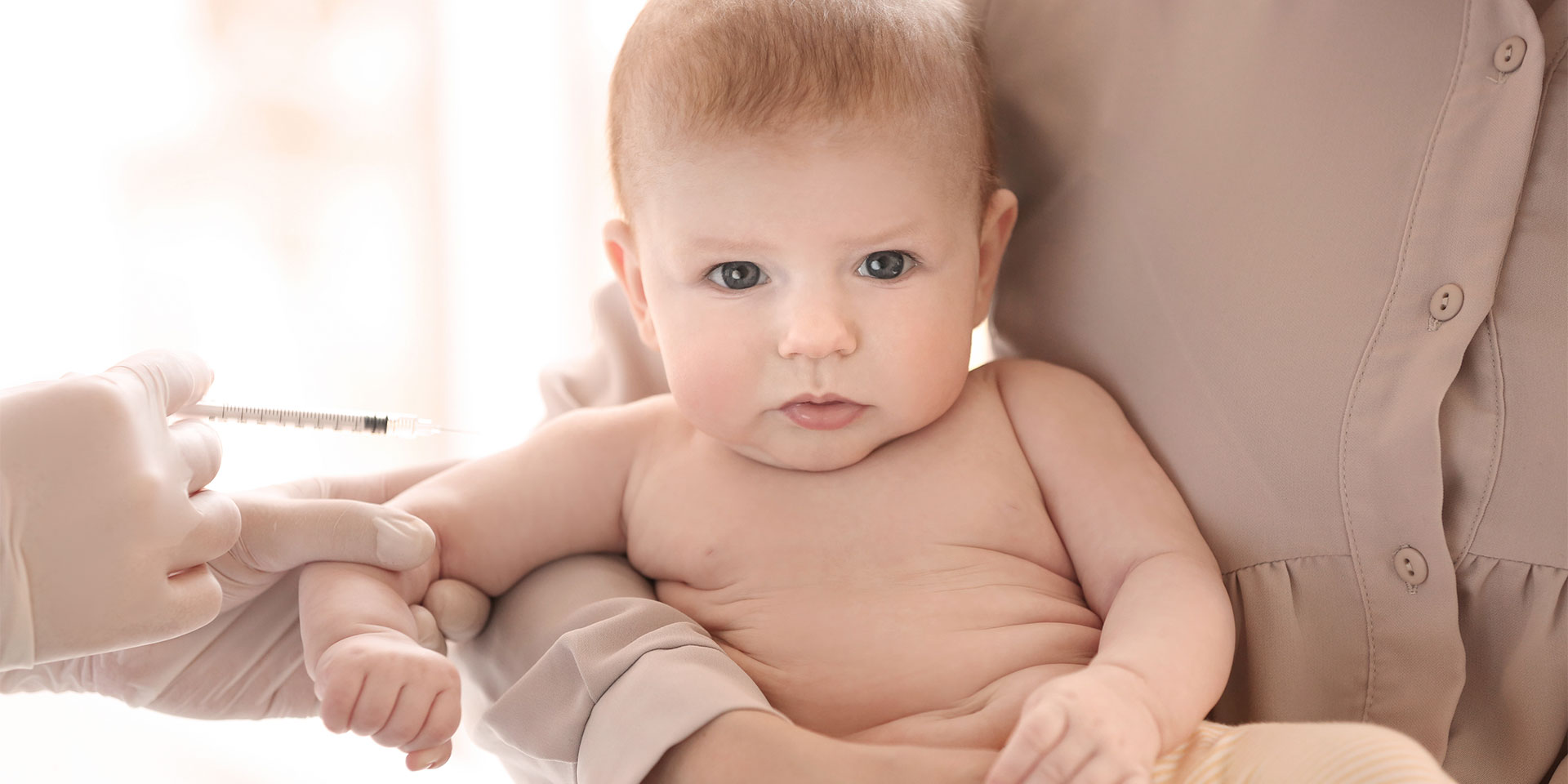Actress and television presenter Jenny McCarthy, a prominent figure in the anti-vaccine movement, commented in March 2010 that according to a Time magazine article, experts claim that vaccines do not cause autism, do not harm children, and are a critical aspect of modern public health. McCarthy dismissed these claims as untrue and expressed frustration at their persistence.
Four years later, in mid-April, the actress was back in the medical news with an op-ed in the Chicago Sun-Times, the first paragraph of which stated that she was not anti-vaccine. “I am not ‘anti-vaccine’. This is not a change in my stance, nor is it a new position I have recently adopted. For years I have repeatedly stated that I am in fact ‘pro-vaccine’, and for years I have been wrongly branded as ‘anti-vaccine'”. Many have doubted the sincerity of these claims, but even accepting that it was just a long-standing misunderstanding (which is not credible given a number of previous virulent statements by the star), it seems unlikely that things will change substantially in the immediate future.
When it comes to vaccines, the world remains polarised between a majority who accept them as life-saving medicines and a vocal minority who see them as a danger and a threat to individual freedom. Opposition to vaccines is not new and it has been around for over 150 years, dating back to the first attempts at immunological prophylaxis against diseases that were rampant. And the reasons for opposition to vaccines, when examined over time, are surprisingly diverse. Looking into the past, we discover that vaccinophobia has deeper roots than one might think from examining current anti-vaccination arguments. History shows us that people have changed the arguments, but the theme has remained the same: vaccines do no good, or the good they do is too little in relation to the evils with which they are associated.
From the East to the West, from the past to the present
In 17th-century China, children were deliberately infected with smallpox from a child with a mild form of the disease, in the hope of preventing more serious cases. To this end, either a powder obtained from a crust or a liquid taken from a blister of a sick child was put into the nose of the healthy child, or the healthy child was made to wear clothes that had been worn by the sick child. Since the sick child had a mild, tolerable form of the disease, the principle was basically the same as in modern live attenuated virus vaccines.[1]
The English physician Edward Jenner had the idea of infecting healthy children not with biological material from a sick child, but with “cowpox”, a mild form of the disease. Because of the considerable similarity between the viruses that cause the two diseases, vaccination with the cowpox virus provided protection against human smallpox.[2]
According to historical records, a similar vaccination practice to that used in China was introduced in the young American colony of Massachusetts Bay in the early 1720s (the process was called “variolation”), but this raised the ire of some religious leaders who considered the practice blasphemous: “For a man to infect a family [by vaccination] in the morning with smallpox and to pray to God in the evening against the disease is blasphemy.” This statement, which may seem naive today, was linked to a limited understanding of the infectious causes of disease, which were often seen as God’s punishment, despite biblical passages to the contrary. This is why one of the religious leaders of the young colony criticised vaccination by saying that smallpox was “a judgement of God on the sins of the people…to avert it it is to provoke him more.” The same religious leaders even called for the trial and execution of a Boston physician, Zabdiel Boylston, for “thwarting God’s will”[3] by encouraging such prophylactic practices. Other isolated cases of theologically-motivated opposition to vaccination were to appear among some Protestant pastors, but also among Catholic clergy.
This attitude towards vaccines is not unique to Christianity. In Egypt, at the end of 1810, the attempt to vaccinate against smallpox was met with a similar argument: smallpox was sent by Allah to punish the people, so vaccination was against the Koran. In India, smallpox was seen as an expression of the anger of the goddess Bhawani or Shitala, and to try to stop the disease was to further anger the goddess. Moreover, in Egypt there was a fear that vaccination would mix Muslim blood with the impure blood of Christians, and in India a similar fear was linked to caste mixing (a kind of “variolation” was used here as early as the late 19th century).[4]
Are vaccines a means of control?
It is easy to criticise religion as unprogressive, but the roots of vaccinophobia were not primarily religious. It was the medical profession itself that opposed not only vaccines but, initially and quite vigorously, the new theories that identified “germs” as the cause of infectious diseases. In the absence of a firm medical understanding of disease causation, paternalism was an important part of the power of physicians in shaping the care and treatment of their patients, and it was not until later in the twentieth century that emerging scientific approaches were routinely taught in medical schools. No wonder, then, that doctors were initially divided over the new method of prophylaxis, and even today a medical minority continues to attack the practice of vaccination in whole or in part.
In the past, however, this opposition was much more intense and probably contributed more than religious factors to the resistance to vaccination in the early days of its practice. By the end of the nineteenth century, an International Anti-Vaccination League had been formed, which organised an international conference in Paris at the end of 1890, which ended with a report from the League’s Executive Committee containing nine conclusions representing arguments against vaccination. The last one stated that “it is unwise, impolitic, unjust and tyrannical to enforce vaccination” and that “all compulsory legislation with regard to vaccination ought to be repealed.”[5]
The public mandate of vaccination as a society-wide measure to control infectious diseases has raised and continues to raise suspicions, not only as an attack on individual freedom, but also as the expression of a hidden agenda by the authorities or other groups that have invisibly seized political authority. In the same Egypt of the early 19th century, the fact that after vaccination the inoculated were left with a visible mark for life aroused deep suspicion, especially among the common people, who suspected that vaccination was merely a “marking” of children organised by the government in order to identify them and later recruit them for military service.[6]. Such speculation may seem naive now, but it is not very different from the speculation currently circulating around the world that, for example, vaccines are a secret weapon of Freemasonry, through which they have spread the HIV virus (responsible for AIDS) to certain parts of the world, or the widely circulated theory in the new media that grossly distorts a speech by Bill Gates, taking one sentence out of context and claiming that the aim of vaccination is simply to reduce the human population worldwide.
Are vaccines dangerous?
Vaccines are drugs that prevent certain infectious diseases, mostly viral but sometimes also bacterial. Like all medicines, vaccines can have adverse effects. Most of these are mild and short-lived; very rarely, vaccines can cause more serious adverse reactions, such as Guillain-Barré syndrome or anaphylaxis.
The most common side effects of vaccines are fever (part of the body’s normal immune response), skin rash (allergic-type reactions), crying in the vaccinated child (sometimes prolonged, up to 18 hours), febrile seizures (convulsions associated with fever, lasting less than 15 minutes in a previously neurologically normal child) and syncope (fainting). Febrile seizures are likely to cause panic among parents, but it is important to know that although vaccines can sometimes cause these seizures, between 2 and 5% of children under the age of 5 will have a febrile seizure, most often not related to vaccines but to a febrile viral illness. Syncope is also likely to frighten parents; it is generally benign, but because it involves a brief loss of consciousness, it can have serious consequences, often from a blow to the head in a fall; 63% of vaccine-related syncope episodes occur within the first five minutes after administration, and 89% within the first 15 minutes. They are most common with vaccines given to adolescents, and serious consequences can often be prevented by close monitoring of the vaccine recipient for one hour after administration.
More serious, but much rarer, are some adverse reactions related to the injection site, such as pyogenic and sterile abscesses (collection of pus or fluid at the injection site), swelling of the extremities, subacromial bursitis (damage to the shoulder as a result of incorrect injection—this is not a side effect of the vaccine, but of the incorrect administration), complex regional pain syndrome (another side effect related to incorrect injection), allergic reactions including anaphylactic shock, and some neurological adverse reactions.
Anaphylactic shock or anaphylaxis is a very serious form of allergy that develops very quickly (within minutes) and can be fatal if not treated urgently. Cases of anaphylaxis can be caused by vaccines, but these are very rare, with less than one case per million doses of vaccine given. There are a few relatively serious neurological adverse reactions that have occasionally been reported following vaccination (optic neuritis, Bell’s palsy or Guillain-Barré syndrome), but current evidence does not establish a causal relationship between vaccines and their occurrence. There are also some serious but very rare adverse reactions that are specific to a particular type of vaccine (e.g. measles inclusion body encephalitis, which can occur very rarely with MMR vaccine in immunocompromised children).
The alleged link between vaccines (especially MMR: measles, mumps, rubella) and autism is based on nothing more than an outrageous case of medical fraud and no concrete or epidemiological evidence; the presentation of this unexpectedly long-standing medical myth and the evidence that has systematically disproved it is beyond the scope of this article and requires the space of a dedicated article.[7]
About the vaccine: In black and white
The most important question, however, is not whether or not vaccines can cause adverse reactions (the answer is definitely yes), but whether or not the risk of these reactions outweighs the benefits of vaccines; in other words, whether or not the risk of these reactions outweighs the risk associated with the diseases vaccines prevent. Here, contrary to the claim in Ms McCarthy’s editorial that there is a grey area for each parent to decide as they see fit, the available evidence clearly shows a black and white picture with no shades of grey.
To use a phrase that has become commonplace, vaccines are victims of their own success. Many have come to doubt their benefits because the various infectious diseases they prevent have disappeared, again thanks to vaccines. Dr Scott Newbold, a paediatrician in an American clinic, said: “I have seen an aerial photograph from 1962 of people waiting in a mile-long line on a hot summer day for the polio vaccine. They had seen the effects of that disease that most of us haven’t.” How many of us have ever seen a person with polio? None, because almost all of us were vaccinated as children.
If we look closely, we will find that for every vaccine, the benefits far outweigh the risks. Diphtheria is a disease that not many people have seen up close. Between 1990 and 1998, in the countries of the former Soviet Union, where vaccination rates were low (between 60% and 80% in some areas), more than 157,000 cases of diphtheria were recorded, including 5,000 deaths. Vaccination could have prevented almost all, if not all, of these deaths.
According to the Romanian press, almost one million Romanians suffer from hepatitis B, a disease that in most cases progresses to liver failure or liver cancer. Vaccination against hepatitis B is helping to steadily reduce the number of new cases. In Romania, vaccination of newborns in the first 24 hours after birth was first introduced in 1995, and available statistics show that the number of new cases of acute hepatitis B has steadily decreased since then (from almost 14 cases per 100,000 inhabitants in 1998 to 4.3 cases per 100,000 inhabitants in 2007, 2 cases per 100,000 inhabitants in 2011 and 1.6 cases per 100,000 inhabitants in 2012).
In the 1960s, before the measles vaccine was introduced, there were 3-4 million cases in the United States, with 48,000 hospitalised patients, mostly children, some of whom developed complications such as encephalitis or severe respiratory illness, and 400-500 deaths from complications. In 2011, amid a decline in vaccinations (due to parental fears), 220 cases of measles were reported in the country; far fewer than in the 1960s, but still the highest number of cases since 1996. Statistics showed that 86% of people with measles in the US had not been vaccinated or did not know if they had been vaccinated.
Abby Peterson was a sweet little girl who was just shy of her sixth birthday in 2001 when she contracted chickenpox, which weakened her health and left her a victim of pneumonia. Her frail body couldn’t cope with the two infections and she died in hospital in her mother’s arms after a 10-hour battle with the disease. Shannon Duffy Peterson, the girl’s mother, had previously asked her paediatrician whether she should vaccinate her child, but he told her that vaccines were “too new” and recommended exposing her to diseases so that she could build up her immunity “naturally.” Now the mother regrets not questioning the doctor’s recommendations and has become a pro-vaccine activist, lobbying the Minnesota legislature for laws requiring all children in the state to be vaccinated. Referring to the minority who vehemently oppose vaccination for fear of autism and other side effects, she says such people are well-meaning but irresponsible. Vaccines do save lives.
Modern medicine’s greatest success
If it weren’t for vaccines, smallpox would still kill nearly two million people every year. According to the World Health Organization, 1.5 million children die every year from diseases that could be prevented by simple vaccination. The truth is that vaccines have saved and are saving millions of lives, and have prevented and are preventing millions of cases of disability. They are perhaps the greatest success of modern medicine, a success that dwarfs that of antibiotics or any other medical technology.
So why are vaccines still maligned, jeered and criticised? Mainly because of a flawed perspective on risk assessment. As humans, we are incapable of putting all risks into perspective. In a book on risk and risk-taking, the American neurosurgeon Ben Carson said that “the average American estimates the odds of dying in an automobile accident this year to be about 1 in 70,000; instead, the actual risk is 1 in 7,000. Most people reckon the prospect of a fatal heart attack at about 1 chance in 20; the real risk is close to 1 in 3.” Many real risks are underestimated; those who oppose vaccines do so because they overestimate the risks associated with them and deny their benefits. In both cases, the costs can be equally deadly.[8]



















